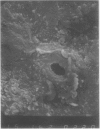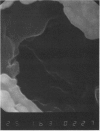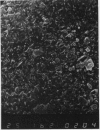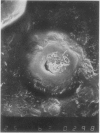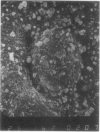Abstract
The resistance of oranges (Citrus sinensis L. Osbeck) and grapefruit (Citrus paradisi Macf.) to ethylene, O2, CO2, and H2O mass transport was investigated anatomically with scanning electron microscope and physiologically by gas exchange measurements at steady state. The resistance of untreated fruit to water vapor is far less than to ethylene, CO2 and O2. Waxing partially or completely plugs stomatal pores and forms an intermittent cracked layer over the surface of fruit, restricting transport of ethylene, O2, and CO2, but not of water; whereas individual sealing of fruit with high density polyethylene films reduces water transport by 90% without substantially inhibiting gas exchange.
Stomata of harvested citrus fruits are essentially closed. However, ethylene, O2 and CO2 still diffuse mainly through the residual stomatal opening where the relative transport resistance (approximately 6,000 seconds per centimeter) depends on the relative diffusivity of each gas in air. Water moves preferentially by a different pathway, probably through a liquid aqueous phase in the cuticle where water conductance is 60-fold greater. Other gases are constrained from using this pathway because their diffusivity in liquid water is 104-fold less than in air.
Full text
PDF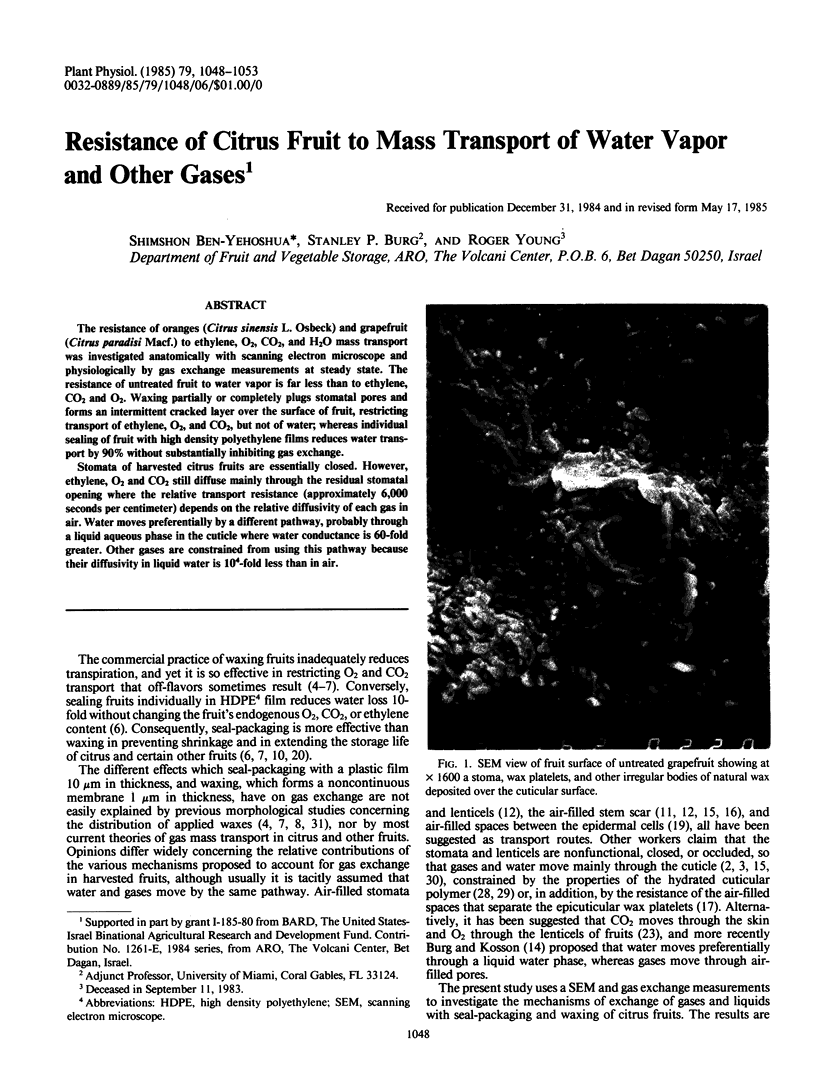
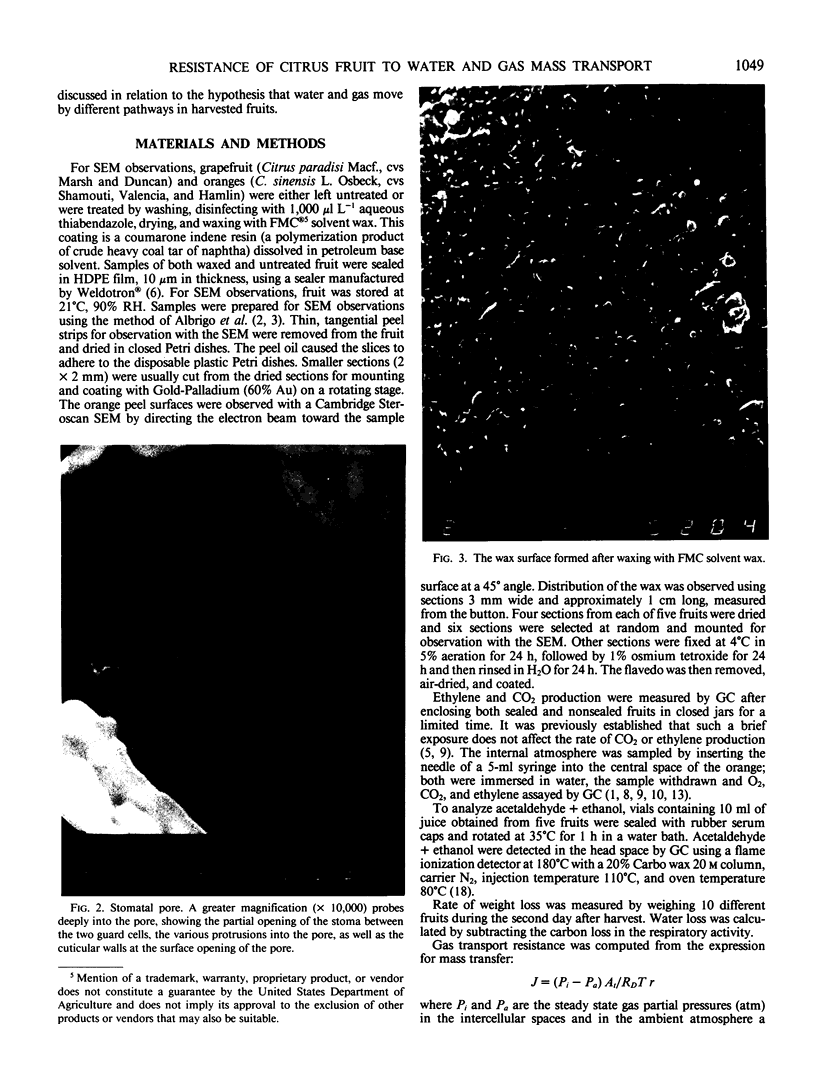

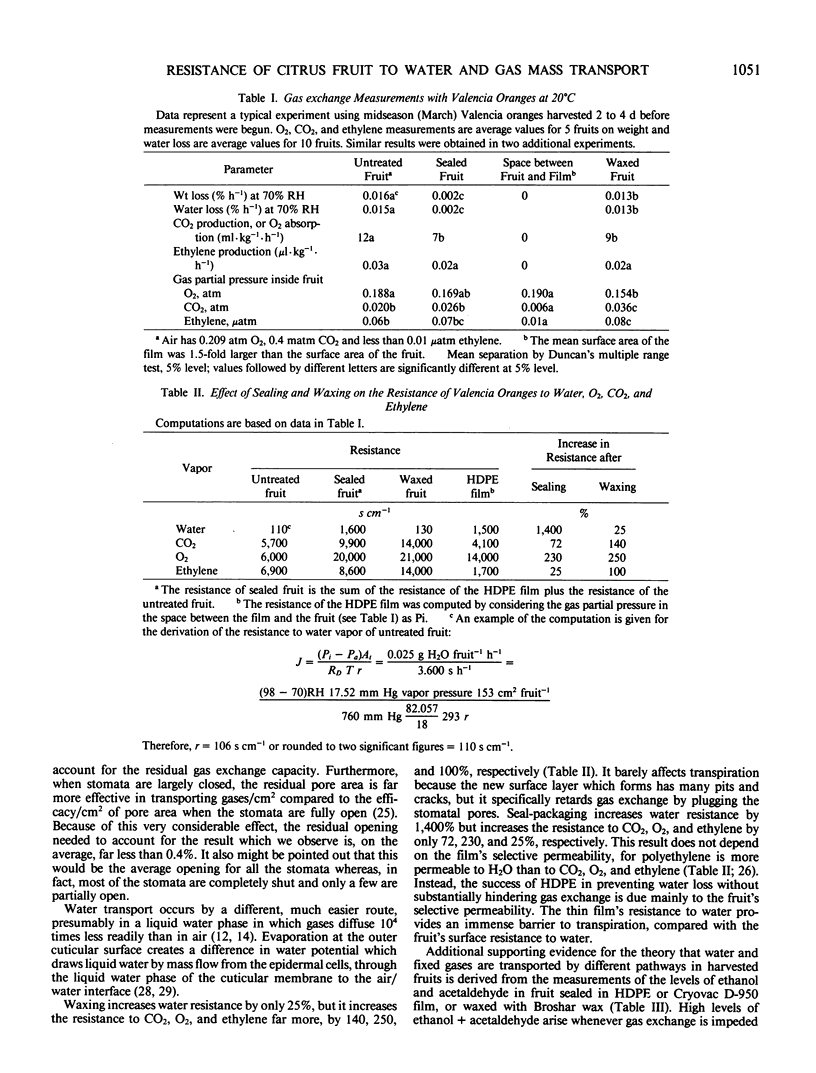


Images in this article
Selected References
These references are in PubMed. This may not be the complete list of references from this article.
- Ben-Yehoshua S., Shapiro B., Chen Z. E., Lurie S. Mode of action of plastic film in extending life of lemon and bell pepper fruits by alleviation of water stress. Plant Physiol. 1983 Sep;73(1):87–93. doi: 10.1104/pp.73.1.87. [DOI] [PMC free article] [PubMed] [Google Scholar]
- Burg S. P., Burg E. A. The interaction between auxin and ethylene and its role in plant growth. Proc Natl Acad Sci U S A. 1966 Feb;55(2):262–269. doi: 10.1073/pnas.55.2.262. [DOI] [PMC free article] [PubMed] [Google Scholar]
- Cameron A. C., Yang S. F. A simple method for the determination of resistance to gas diffusion in plant organs. Plant Physiol. 1982 Jul;70(1):21–23. doi: 10.1104/pp.70.1.21. [DOI] [PMC free article] [PubMed] [Google Scholar]
- El-Baradi T. T., Raué H. A., De Regt C. H., Planta R. J. Stepwise dissociation of yeast 60S ribosomal subunits by LiCl and identification of L25 as a primary 26S rRNA binding protein. Eur J Biochem. 1984 Oct 15;144(2):393–400. doi: 10.1111/j.1432-1033.1984.tb08477.x. [DOI] [PubMed] [Google Scholar]



